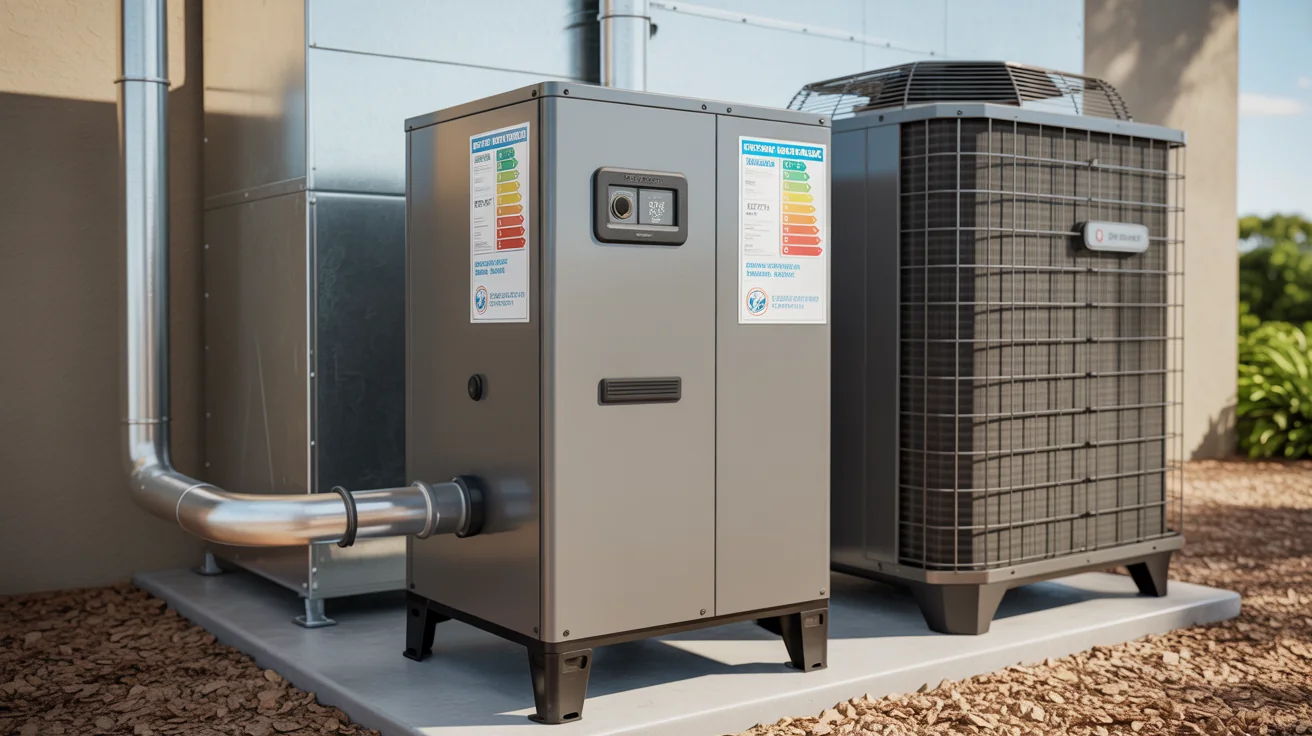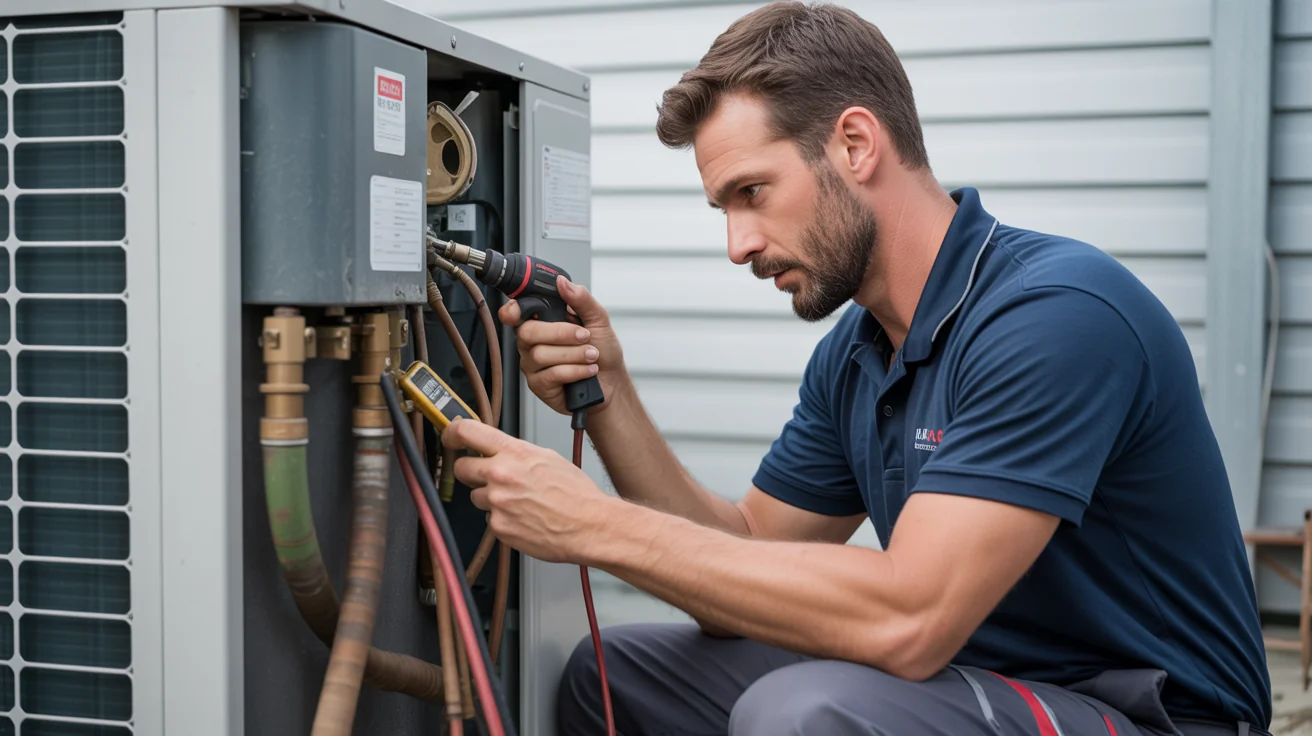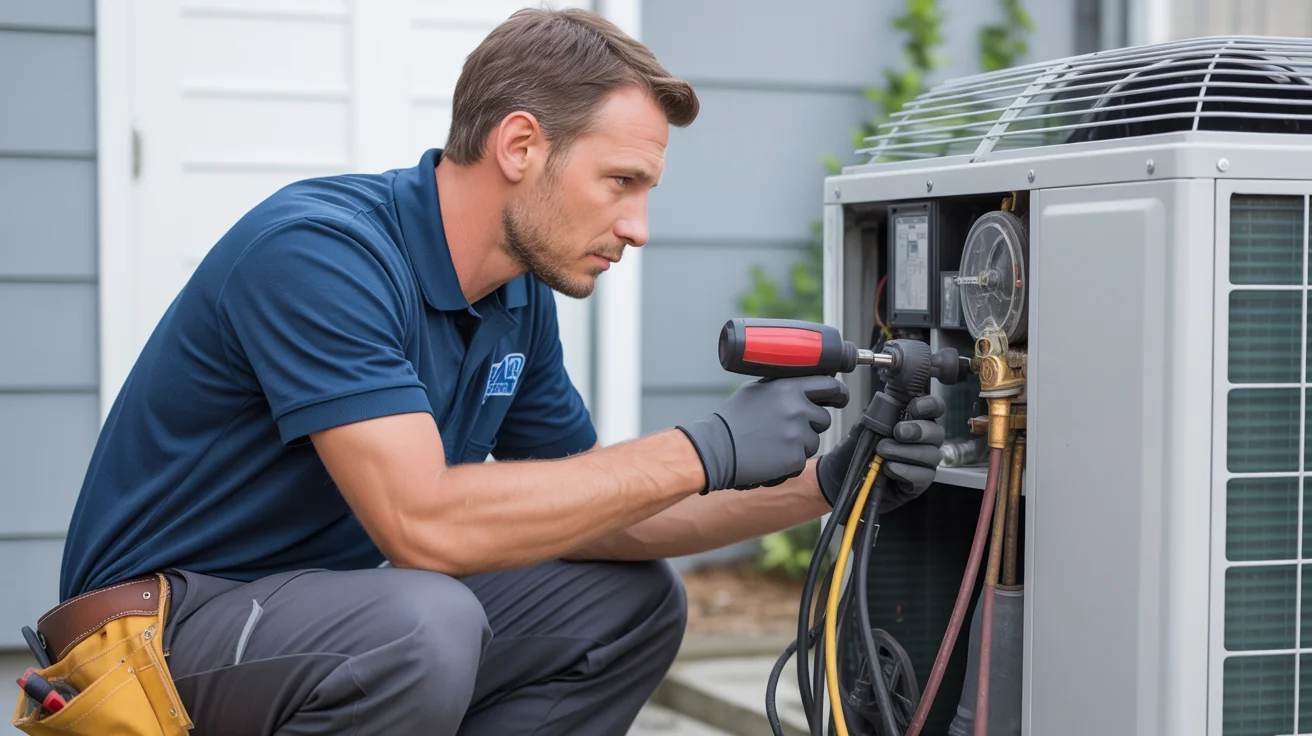Summer Cooling Optimization: Texas Heat Survival Guide for Maximum AC Efficiency
Complete guide to surviving Texas summer heat with optimal AC performance. Expert strategies for peak cooling efficiency, energy savings, and system reliability during extreme heat waves.

- When 100°F Becomes Your New Normal
- Why North Texas Heat Breaks HVAC Systems
- Pre-Season Cooling System Optimization
- Peak Performance Strategies for Extreme Heat
- Equipment-Specific Optimization Strategies
- Energy Cost Management During Peak Summer
- Advanced Cooling Technologies for Texas Heat
- Maintenance Intensive Summer Protocols
+ 7 more sections below...
- When 100°F Becomes Your New Normal
- Why North Texas Heat Breaks HVAC Systems
- Pre-Season Cooling System Optimization
- Peak Performance Strategies for Extreme Heat
- Equipment-Specific Optimization Strategies
- Energy Cost Management During Peak Summer
- Advanced Cooling Technologies for Texas Heat
- Maintenance Intensive Summer Protocols
+ 7 more sections below...
When 100°F Becomes Your New Normal
Summer in North Texas isn’t just hot - it’s a three-month equipment torture test. I’ve worked on rooftops when the metal was literally too hot to touch, in attics that hit 140°F, on units that had been running nonstop for 47 days straight.
Sixty-plus days above 100°F. Heat indexes reaching 115°F. Your AC system operating under conditions that would destroy equipment in moderate climates.
Here’s the Reality: Texas AC systems work 3-4 times harder than equipment anywhere else. I’ve seen more compressor failures in one North Texas summer than I saw in three years working in Colorado.
Optimizing your cooling system for these conditions isn’t about luxury - it’s about survival, avoiding bankruptcy-level electric bills, and keeping your equipment from committing suicide.
Why North Texas Heat Breaks HVAC Systems
What Your Equipment Actually Faces:
- Sustained 100°F+ torture for weeks at a time
- Overnight “lows” of 85°F that never let your system rest
- Solar heat gain intensified by urban heat island effects
- Thermal mass buildup in buildings from continuous heat exposure
Humidity Complications:
- High humidity (60-80%) increases apparent temperature
- Moisture loads stress cooling systems beyond capacity
- Dehumidification needs compete with cooling needs
- Condensate drainage challenges during peak humidity periods
Infrastructure Stress:
- Electrical grid instability during peak demand periods
- Voltage fluctuations damaging sensitive AC components
- Dust storms and allergens clogging filters within days
- Storm season mixing extreme heat with severe weather events
Pre-Season Cooling System Optimization
Critical System Preparation for Texas Heat
Late Spring Optimization Checklist (March-April):
1. Comprehensive System Inspection
- Heat exchanger and coil condition assessment
- Refrigerant level verification and leak testing
- Electrical connection tightening and testing
- Ductwork inspection for winter damage or settling
- Insulation assessment and upgrade planning
2. Equipment Capacity Analysis
- Cooling load calculation for your specific home
- Equipment sizing verification for Texas heat conditions
- Ductwork adequacy assessment for peak demand
- Zoning evaluation for hot spot management
3. Efficiency Upgrades and Modifications
- Variable speed motor installation for improved efficiency
- Smart thermostat upgrade with peak demand management
- Ductwork sealing and insulation enhancement
- Window film and shading improvements
Refrigerant System Optimization
The Foundation of Texas Summer Cooling: Proper refrigerant charge and system balance are critical for surviving Texas heat. Even minor refrigerant issues become major problems under extreme conditions.
Professional Refrigerant Optimization Includes:
- Superheat and subcooling measurements across all operating conditions
- System evacuation and fresh refrigerant charge
- Leak detection and prevention throughout system
- Metering device calibration for optimal flow rates
- Performance verification across temperature ranges
Signs Your System Needs Refrigerant Service:
Cooling capacity decreases during the hottest days when your system should be performing at its peak indicate refrigerant issues. Higher than normal energy usage for the same comfort level suggests system inefficiency from improper refrigerant charge. Ice formation on indoor coil during peak heat indicates serious airflow or refrigerant problems requiring immediate professional attention. Significant temperature differences between vents suggest uneven cooling that could indicate refrigerant distribution issues. Systems running continuously without reaching set temperature often suffer from refrigerant problems that prevent proper heat transfer.
Peak Performance Strategies for Extreme Heat
Thermostat Programming for Texas Survival
Heat Wave Programming Strategy: Traditional thermostat advice fails in Texas heat. Our extreme conditions require specialized programming approaches.
Optimal Texas Heat Programming: During the pre-cooling phase, set temperatures to 75°F from 6-8 AM while outdoor temperature is lower and cooling is more efficient. Peak heat management allows temperature to drift to 78-79°F during 2-6 PM peak when energy costs are highest. The recovery phase resumes 76-77°F after 6 PM when temperatures moderate and energy costs decrease. Night optimization maintains 75-76°F for comfort while outdoor temperatures remain high through the evening hours.
Advanced Programming Techniques:
- Set different programs for heat warning days (100°F+)
- Use humidity-based programming when available
- Implement peak demand response programming
- Create emergency cooling schedules for extreme heat events
Load Management During Heat Waves
Strategic Cooling Load Reduction:
1. Peak Hour Load Shifting
- Run dishwashers, washing machines, dryers before 2 PM or after 7 PM
- Delay cooking and baking during peak heat hours
- Use window coverings and solar films to reduce heat gain
- Schedule higher heat-generating activities for cooler periods
2. Zoning and Airflow Optimization
- Close vents in unused rooms during peak heat periods
- Use ceiling fans to allow higher thermostat settings
- Create cooling zones focusing on occupied areas
- Optimize vent dampers for hot spot management
3. Humidity Control Integration
- Operate whole-home dehumidifiers to reduce apparent temperature
- Use bathroom and kitchen exhaust fans to remove humidity sources
- Time humidity-generating activities (showers, cooking) for cooler periods
- Monitor indoor humidity levels and adjust cooling accordingly
Equipment-Specific Optimization Strategies
Central Air Conditioning System Optimization
Multi-Stage System Management: Modern central systems often have multiple cooling stages that must be properly managed for Texas conditions.
Stage Management Strategy:
- First stage operation for moderate heat (80-95°F outdoor)
- Second stage engagement for extreme heat (95-105°F outdoor)
- Emergency cooling protocols for heat dome conditions (105°F+ sustained)
Ductwork Performance for Texas Heat:
- Insulate all ductwork to R-8 minimum in attics and crawl spaces
- Seal all ductwork connections to prevent conditioned air loss
- Size return ducts adequately for increased cooling demands
- Install properly sized supply ducts for each room’s cooling needs
Heat Pump Systems in Texas Summer
Heat Pump Advantages in Texas: Heat pumps can be highly efficient in Texas heat, but require specific optimization strategies.
Heat Pump Summer Optimization:
- Refrigerant charge optimization for cooling mode operation
- Reversing valve testing and maintenance for reliable switching
- Outdoor coil cleaning for maximum heat rejection
- Indoor airflow maximization for efficient operation
Heat Pump vs. Traditional AC in Texas:
Heat pumps provide 20-30% better efficiency in moderate heat (85-100°F), making them excellent choices for most North Texas summer conditions. Performance equalizes with traditional systems above 100°F when extreme heat reduces heat pump advantages. Heat pumps offer valuable heating capability for occasional Texas cold snaps, providing year-round efficiency. Maintenance needs remain similar to traditional systems, but the reversing valve adds complexity requiring specialized service knowledge.
Ductless Mini-Split Optimization
Learn more about our professional Ductless Mini-Split services.
Multi-Zone Cooling Strategy: Ductless systems excel in Texas heat when properly configured and maintained.
Mini-Split Texas Optimization:
- Individual zone programming for occupied spaces
- Higher SEER ratings (20+) perform better in extreme heat
- Regular cleaning of indoor unit filters and coils
- Outdoor unit protection from direct sun exposure
- Proper refrigerant line insulation for efficiency
Energy Cost Management During Peak Summer
Understanding Texas Electricity Markets
Time-of-Use Rate Optimization: Most Texas electric providers offer time-of-use rates that can significantly impact cooling costs.
Peak Rate Management Strategy: Off-peak cooling (10 pm - 2 pm) allows maximum cooling and pre-cooling when energy rates are lowest. Peak rate periods (2 pm - 8 pm) require minimal cooling, relying on thermal mass to maintain comfort. Shoulder periods (8 pm - 10 pm) enable gradual return to comfort settings as energy rates decrease.
Peak Demand Reduction Techniques:
Pre-cool homes to 72-74°F before peak hours to take advantage of lower energy rates and build cooling reserves. Utilize thermal mass in floors and walls to maintain comfort during peak rate periods without running your system. Implement smart thermostats with utility demand response programs that automatically adjust for peak pricing periods. Consider battery backup systems for peak shaving that can power your system during the most expensive rate periods.
Cost-Effective Efficiency Improvements
High-Impact, Lower-Cost Upgrades:
1. Insulation and Air Sealing ($500-2,000)
- Attic insulation upgrade to R-38 or higher
- Air sealing around penetrations and connections
- Ductwork sealing and insulation improvement
- Window film installation for solar heat reduction
Return on Investment: 20-30% cooling cost reduction, 2-4 year payback
2. Smart Thermostat with Advanced Programming ($200-500)
- Peak demand response capability
- Learning algorithms for occupancy patterns
- Remote monitoring and control for optimization
- Integration with utility demand response programs
Return on Investment: 10-20% cooling cost reduction, 1-2 year payback
3. Variable Speed Motor Upgrades ($800-1,500)
- Continuous airflow for improved humidity control
- Reduced energy consumption during moderate temperatures
- Better air filtration through constant circulation
- Quieter operation and improved comfort
Return on Investment: 15-25% cooling cost reduction, 3-5 year payback
Advanced Cooling Technologies for Texas Heat
Hybrid Cooling Systems
Combining Technologies for Maximum Efficiency: Advanced cooling strategies combine multiple technologies for optimal Texas performance.
Hybrid System Options:
Traditional AC with evaporative pre-cooling provides enhanced efficiency during dry heat periods common in Texas. Heat pump systems with backup traditional AC offer optimal efficiency most of the year with conventional cooling backup for extreme heat. Zoned systems with supplemental mini-splits address hot spots and provide targeted cooling for high-demand areas. Solar-assisted cooling systems reduce peak demand by using renewable energy when cooling needs are highest.
Geothermal Cooling in North Texas
Ground Source Heat Pump Advantages: While installation costs are higher, geothermal systems excel in Texas conditions.
Geothermal Benefits for Texas:
Consistent 65°F ground temperature provides a stable cooling source regardless of extreme outdoor temperatures. Geothermal systems maintain 300-400% efficiency ratings even during the hottest Texas weather when traditional systems struggle. Minimal outdoor equipment reduces vulnerability to weather damage, storms, and extreme temperatures. Combined heating and cooling in a single system provides year-round efficiency for Texas’s variable climate.
Geothermal Considerations:
Higher installation costs ($15,000-25,000) are offset by longer lifespan and superior efficiency in Texas conditions. Soil conditions in North Texas are generally favorable for geothermal installation with adequate thermal conductivity. Municipal incentives and federal tax credits help offset initial investment costs making geothermal more accessible. Professional soil analysis is required for optimal design to ensure system performance and longevity.
Solar-Assisted Cooling Systems
Harnessing Texas Sunshine for Cooling: Solar-assisted systems use abundant Texas sunshine to power cooling systems.
Solar Cooling Options:
- Solar electric panels powering traditional AC systems
- Solar thermal absorption cooling for large applications
- Hybrid solar-electric systems with battery storage
- Solar attic ventilation to reduce cooling loads
Maintenance Intensive Summer Protocols
Monthly Maintenance During Peak Season
Critical Monthly Tasks (June-September):
1. Filter Management
- Check filters every 2 weeks during peak usage
- Replace standard filters monthly, high-efficiency filters every 2-3 months
- Clean reusable filters weekly during dust storm periods
- Keep spare filters on hand for emergency replacement
2. Coil Maintenance
- Inspect outdoor coil weekly for debris and blockages
- Rinse outdoor coil gently with water to remove dust and pollen
- Check indoor coil for ice formation or excessive dirt buildup
- Schedule professional coil cleaning if performance degrades
3. Drainage System Management
- Check condensate drains weekly during high humidity periods
- Clear drain lines of algae and debris buildup
- Verify proper drain pan function and emptying
- Install drain pan treatments to prevent biological growth
Emergency Maintenance During Heat Waves
Heat Wave Emergency Protocols: When temperatures exceed 105°F for multiple days, systems need emergency support.
Daily Heat Wave Checks:
- Monitor system runtime and cycling patterns
- Check for ice formation on indoor components
- Verify adequate airflow from all vents
- Listen for unusual noises indicating system stress
Emergency Support Measures:
- Provide shade for outdoor units during peak sun hours
- Apply additional outdoor coil cleaning if performance drops
- Reduce system load through increased fan usage and shading
- Have backup cooling plan ready in case of system failure
Troubleshooting Peak Summer Performance Issues
Related: Troubleshooting
Common Texas Heat Problems and Solutions
1. System Running Continuously Without Reaching Temperature
Causes and Solutions: Undersized equipment requires considering supplemental cooling or system upgrade to meet cooling demands. Dirty coils need professional cleaning or replacement to restore proper heat transfer efficiency. Low refrigerant requires professional service for leak detection and recharge to restore cooling capacity. Blocked airflow problems need checking filters, vents, and ductwork for obstructions that reduce system performance. Thermostat location issues require relocation if exposed to direct sun or heat sources that affect temperature readings.
2. High Energy Bills Despite Normal Operation
Diagnostic Steps:
- Compare current usage to previous years for same periods
- Check for air leaks around windows, doors, and ductwork
- Verify proper insulation levels in attic and walls
- Analyze time-of-use patterns and peak demand charges
- Schedule professional efficiency testing and system optimization
3. Uneven Cooling Across Home
Balancing Solutions:
- Adjust dampers in main ductwork for flow balance
- Install additional return vents in problem areas
- Consider zoning system for independent temperature control
- Add ceiling fans in hot spots to improve air circulation
- Evaluate need for supplemental mini-split systems
When to Call for Professional Service
Immediate Professional Service Required:
- System completely stops working during heat wave
- Electrical burning smells or sounds
- Ice formation on any system components
- Refrigerant leaks (hissing sounds, oily spots)
- Electrical issues or power supply problems
Scheduled Professional Service Recommended:
- Annual complete system inspection and tune-up
- Bi-annual professional coil cleaning
- Refrigerant level verification and system optimization
- Ductwork inspection and sealing service
- Efficiency testing and performance optimization
Regional Cooling Strategies for North Texas Cities
Dallas-Fort Worth Metro Considerations
Urban Heat Island Management: Metro areas experience temperatures 5-10°F higher than surrounding areas.
Metro-Specific Strategies:
Increase system capacity calculations by 15-20% for urban heat effects to account for higher actual temperatures in metropolitan areas. Focus on nighttime cooling strategies when temperatures moderate slightly to take advantage of the only relief from urban heat. Utilize municipal peak demand response programs that provide financial incentives for reducing consumption during grid stress periods. Consider rooftop shading and heat reflective surfaces to reduce solar heat gain on building structures and HVAC equipment.
Frisco, Plano, and Allen Cooling Optimization
Serving Frisco and surrounding areas. Serving Plano and surrounding areas. Serving Allen and surrounding areas.
Newer Home Advantages: Better insulation and more efficient systems in newer developments.
Optimization Focus:
Smart home integration provides advanced cooling control with learning capabilities and remote monitoring for optimal efficiency. High-efficiency system maintenance ensures warranty compliance while maximizing the advanced features of modern equipment. Advanced zoning systems for large homes provide personalized comfort control and significant energy savings through targeted cooling. Integration with home automation systems enables coordinated operation with security, lighting, and other home systems for comprehensive energy management.
McKinney, Prosper, and Surrounding Areas
Serving McKinney and surrounding areas. Serving Prosper and surrounding areas.
Mixed Housing Stock Challenges: Combination of older and newer homes requires varied approaches.
Tailored Strategies: Older homes should focus on insulation and air sealing upgrades to reduce cooling loads and improve efficiency. Newer homes benefit from optimizing existing high-efficiency systems through proper maintenance and programming. Rural areas should consider backup power for system reliability during outages and utility interruptions. Large lots present opportunities to evaluate geothermal system feasibility for long-term energy savings.
Cost Analysis: Investment vs. Savings
Professional Optimization Service Investment
Comprehensive Summer Cooling Optimization: $299-599
- Complete system inspection and performance testing
- Refrigerant level optimization and leak detection
- Coil cleaning and airflow optimization
- Thermostat programming and control optimization
- Efficiency testing and improvement recommendations
Potential Annual Savings:
Energy cost reduction ranges from $400-1,200 per season through optimized system performance and efficient operation. Avoided emergency repairs save $500-2,500 per incident by identifying and addressing problems before they cause system failures. Extended equipment life provides $200-500 annual value by reducing wear and preventing premature replacement. Improved comfort and reliability provides invaluable benefits during heat waves when reliable cooling is essential for health and safety.
Return on Investment: 200-500% first-year return through reduced energy costs and avoided emergency repairs.
Equipment Upgrade Cost-Benefit Analysis
High-Efficiency System Replacement:
- Investment: $6,000-15,000 depending on size and features
- Annual savings: $800-2,000 in energy costs
- Payback period: 4-8 years Additional benefits include improved reliability, warranty coverage, and advanced features that enhance system performance
Zoning System Addition:
- Investment: $2,500-6,000 for full-home zoning
- Annual savings: $400-1,000 through targeted cooling
- Payback period: 3-6 years Additional benefits include personalized comfort control and reduced wear on system components through optimized operation
Frequently Asked Questions
Q: How low can I set my thermostat during a Texas heat wave? A: During extreme heat (100°F+), setting below 75°F often causes continuous operation without reaching temperature. Focus on comfort optimization rather than lower temperatures.
Q: Should I turn my AC off when leaving for work during summer? A: Never turn completely off during Texas summer. Set 5-8°F higher than occupied setting. Complete shutdown costs more in recovery energy than maintaining higher temperature.
Q: Why does my AC struggle more each summer? A: Texas heat causes cumulative wear on systems. Annual maintenance, coil cleaning, and refrigerant optimization are essential for maintaining performance in extreme heat.
Q: Is it worth upgrading to a higher SEER system in Texas? A: Higher SEER ratings (16+ SEER) provide significant savings in Texas due to extended cooling seasons and extreme temperature operation.
Q: How can I reduce my summer electric bills? A: Combine optimal thermostat programming, peak hour management, system maintenance, and efficiency upgrades for maximum savings. Professional optimization typically reduces costs by 20-40%.
Q: What temperature should I maintain during heat warnings? A: During extreme heat warnings (105°F+), focus on safety and system protection. Maintain 76-78°F and use fans for additional comfort rather than lowering thermostat further.
Take Action: Optimize Your Cooling System for Texas Heat
Don’t wait for the first 100°F day to discover your cooling system isn’t ready. Professional summer optimization make sures maximum efficiency, reliability, and comfort throughout the brutal Texas summer.
Ready to improve your cooling system for Texas heat? Call (940) 390-5676 for complete summer cooling optimization. Schedule online at jupitairhvac.com/contact. Ask about our summer maintenance plans and emergency service priority. Get started with pre-season optimization service.
Emergency Summer Service Coverage
Jupitair HVAC provides priority emergency service throughout North Texas during heat waves: 24/7 emergency response during extreme heat events. 2-hour response guarantee for cooling system failures. Same-day service for all cooling system problems. Heat wave priority scheduling for existing maintenance plan customers.
Surviving Texas summer heat requires proper cooling system optimization and maintenance. Trust Jupitair HVAC’s expertise to keep your family comfortable through the most extreme weather conditions.
Jupitair HVAC - Your North Texas cooling specialists serving the region since 2008. Licensed & Insured.
Related Resources
Looking for more information? Check out these helpful resources:
- View All HVAC Services - Complete list of our residential and commercial services
- Service Areas - We serve Frisco, Plano, McKinney, Allen, and surrounding areas
- Emergency Service - Available 24/7 for urgent HVAC needs
- Maintenance Plans - Keep your system running efficiently year-round
- HVAC Blog - Expert tips and advice for North Texas homeowners
Need Professional HVAC Service?
Our certified technicians are ready to help with any HVAC needs in North Texas




